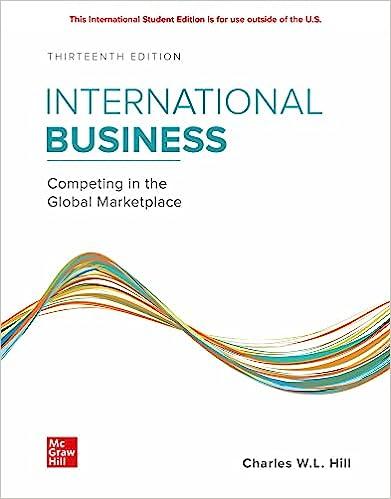The Procter & Gamble Company (P&G) is a force in the global marketplace. It is the biggest
Question:
The Procter & Gamble Company (P&G) is a force in the global marketplace. It is the biggest U.S. advertiser at some $5 billion annually, and spends a staggering $9 billion annually worldwide on advertising. Beyond ad spending, P&G is also the world’s largest maker of household products, with more than $80 billion in annual sales and a net worth (sometimes referred to as “market capitalization”) greater than the gross domestic product (GDP) of most countries. P&G markets products in more than 180 countries. Geographically, these 180 countries are divided into the following core markets:
Asia; Europe; India, the Middle East, and Africa; Latin America; and North America. The company sells products to about 5 billion of the world’s 7 billion people.
P&G organizes its many products into four industry-based sectors: (1) Baby, Feminine and Family Care; (2)
Beauty, Hair and Personal Care; (3) Fabric and Home Care; and (4) Health and Grooming. In fact, P&G states that “we have made P&G’s organization structure an important part of our capability to grow . . . it combines global scale benefits with a local focus to win with consumers and retail customers in each country where P&G products are sold.”4 To best serve the global markets, P&G decided it would cut around 100 brands from its portfolio and focus on its core remaining 80 brands, which generated 95 percent of the company’s profits. Alan “A.G.” Lafley, then the company’s board chair, president, and CEO, said, “This will be a much simpler, much less complex company of leading brands that’s easier to manage and operate.” Additionally, P&G cut its marketing and advertising agency roster by 50 percent over the previous three years, from around 6,000 to 3,000 companies, in a bid to increase its marketing productivity.
With the organizational size and product line breadth come both industry responsibility and business opportunity (see Chapter 5 on ethics, corporate social responsibility, and sustainability for a discussion of combining industry and business opportunities). P&G says that “our responsibility is to be an ethical corporate citizen” and the company articulates this in its Purpose Statement: “We will provide branded products and services of superior quality and value that improve the lives of the world’s consumers, now and for generations to come. As a result, consumers will reward us with leadership sales, profit and value creation, allowing our people, our shareholders and the communities in which we live and work to prosper.”5
Questions
1. Advertising is important for most companies, especially companies such as P&G that sells mostly to end customers. But most people already know about P&G products such as Charmin bathroom tissue and moist towelettes, Crest toothpaste, and so on. Does P&G really need to constantly put money into advertising when its products already have a stronghold in the global marketplace?
2. P&G cut its marketing and advertising agency roster by 50 percent over the past three years from around 6,000 to 3,000 companies in a bid to increase its marketing productivity, efficiency, and effectiveness. Given that it spends $9 billion worldwide on advertising, should P&G have more or fewer marketing and advertising agencies doing its advertising?
3. By consolidating and cutting 100 brands from its consumer portfolio of brands, does P&G run the risk of ultimately losing out on global market opportunities?
Step by Step Answer:

ISE International Business Competing In The Global Marketplace
ISBN: 9781260575866
13th International Edition
Authors: Charles Hill





